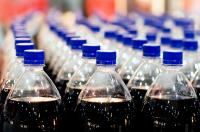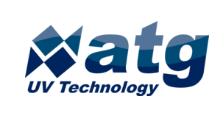 Add My Company
Add My Company
Sign In

FIRSTLY, WHY CHOOSE UV IRRADIATION TECHNOLOGY?
Diane White of atg UV Technology talks to Food Processing magazine and gives top tips on specifying UV systems
Ultraviolet irradiation is the technology of choice for liquid disinfection in the food and beverage industries but, in order to get the best out your UV system, it has to be designed for the duty. To ensure that the design meets your needs you have to provide your UV supplier with enough information that they will be able not only to select the right size of the reactor but also to consider what other features they will need to build in to make the system complete. So let’s look at the key information needed and why.
CHECKLIST OF ASPECTS YOU SHOULD COVER WITH YOUR UV SUPPLIER
We strongly believe in providing flexible, tailored UV disinfection systems, and understand that there are a vast variety of needs depending on your industry type and a wide range of other factors. Here are 5 of the most important pieces of information you should provide to your UV supplier to make sure you will have the right system to meet your business needs.
1. DEFINING THE FLOW RATE
The first thing to define is the flow rate of the liquid you want to treat. That sounds easy enough but they will want not only the maximum, average and minimum flows but also the pattern of use.
For example, if the normal average flow is 5m3/h for 6 hours per shift but the maximum is 10m3/h for 2 hours it may be better to use two 5m3/h units with one normally off-line and just brought into service for the maximum flow.
Bottles on a manufacturing facility being treated by UV irradiation technology
2. DEFINING WHETHER THE FLOW IS CONTINUOUS OR INTERMITTENT
Then is the flow continuous, and do you need a standby stream to cover for maintenance or breakdown? The minimum flow is important because some large UV reactors need a minimum flow to keep them cool.
Equally important is whether the flow is intermittent. If the flow stops it may be necessary to switch the reactor off, but then, when it restarts it will need a warm-up time before it can guarantee to deliver the full germicidal dose and this may necessitate a run to waste or a recycle line.
3. DEFINING THE LIQUID CHARACTERISTICS FOR UV DISINFECTION
Next is the liquid characteristics – most UV systems treat water but UV is also used to treat syrups, juices and similar solutions. Your supplier will need to know the density, viscosity and temperature of the liquid including any maximum and minimum variations. For disinfection to occur the radiation has to pass through the liquid and the critical parameter here is the UV transmittance (UVT). This measures how much of the radiation power is lost by absorption or scattering of the rays in a 1cm
For UV disinfection to occur, the radiation has to pass through the liquid and the critical parameter here is the UV transmittance (UVT). This measures how much of the radiation power is lost by absorption or scattering of the rays in a 1cm path length through the liquid. It is usually measured in percentage so a liquid with UVT of 80% means that 20% of the UV lamp intensity will be lost in a 1cm path.
Knowing this allows the supplier to rate the reactor to compensate for this loss. Other useful characteristics are turbidity (a measure of colloidal particles that scatter light), colour and UV254 absorbance both of which indicate how much light is absorbed by the liquid. There are quite a few different units used for these measurements so make sure that you tell the supplier what they are.
4. ESTABLISHING THE CORRECT UV DOSE
Finally the UV dose (or fluence). A single pass through a standard UV system delivering a UV dose of 40 mJ/cm2 will typically achieve better than a 4 Log reduction (99.99%) of most bacteria and protozoans like Cryptosporidium. However some yeasts and moulds require much higher doses so, if possible, let your supplier know what species are (or could be) present. Atg UV Technology has a range of UV products to fit your specific needs.
For UV to be effective it has to be delivered uniformly to all parts of the reactor so make sure that there is a UV monitor built into the reactor to check that the required dose is being received. But that’s only part of the story.
A single monitor can only check a single point in the reactor. Being certain that the applied dose is reaching all areas of the reactor depends on the reactor design.
Reactor performance can be validated by type testing using independent third party bioassay with live, surrogate microorganisms (typically bacteriophage T1 and MS2) against standardised test methods – the internationally accepted protocol is that of the US EPA so ask for a validation certificate to this effect.
5. LASTLY, PREPARATION IS KEY…
Collating all this information before talking to your UV supplier will pay dividends in ensuring that your system meets all of your requirements and provides you with years of trouble-free operation.
To learn more about chemical-free microbiological control systems visit the atg UV Technology website or the atg UV stand in Hall C1.332 at drinktec 2017, 11-15 September in Munich.
Need further advice about UV irridiation and how it will benefit your business? Contact our team of experts for more information.
For more information on What Shall We Tell The UV Supplier? talk to atg UV Technology
Enquire Now
More related to What Shall We Tell The UV Supplier?
List your company on FindTheNeedle.

